With the theme of “Leading power digitalization for a zero-carbon and smart society”, Huawei Digital Power presents its Zero-carbon All-scenario solution at SNEC 2021, the world’s largest solar trade exhibition being held June 3-5 in Shanghai, China. As a trailblazer in the global solar PV industry, Huawei is doing its part to fuel PV to become the main energy source and to create a greener world.
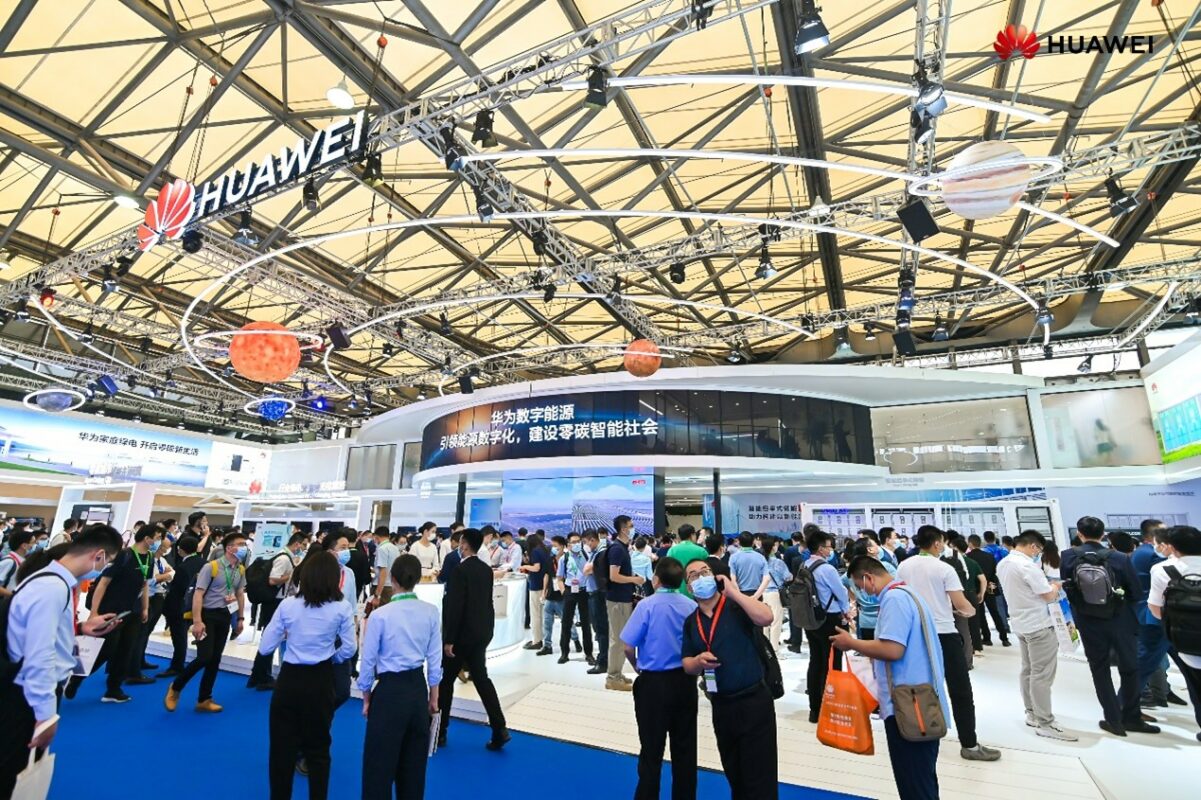
Image: Huawei.
One of the most eye-catching parts of this exhibition is Huawei FusionSolar All-scenario PV & Storage Solution, which was unveiled on June 3. It covers “4+1” scenarios: Smart PV Generator FusionSolar 8.0, Green Residential Power 2.0, Green C&I Power 1.0, and Off-grid (fuel removal) Power Supply Solutions + Energy Cloud, aiming to accelerate the shift to zero-carbon generation and bridge the energy divide.
On top of the exhibition display, Huawei also hosts a two-day Huawei SNEC 2021 Global Virtual Summit, starting June 3, for customers and partners who cannot attend the exhibition in person. The online summit gives the audience a valuable chance to witness the new products launch, insightful expert interviews and highlights from the booth.
Asia Pacific time zone: https://solar.huawei.com/apac/Events/2021/SNEC2021
Europe time zone: https://solar.huawei.com/eu/Events/2021/SNEC2021
Middle East time zone: https://solar.huawei.com/mea/Events/2021/SNEC2021
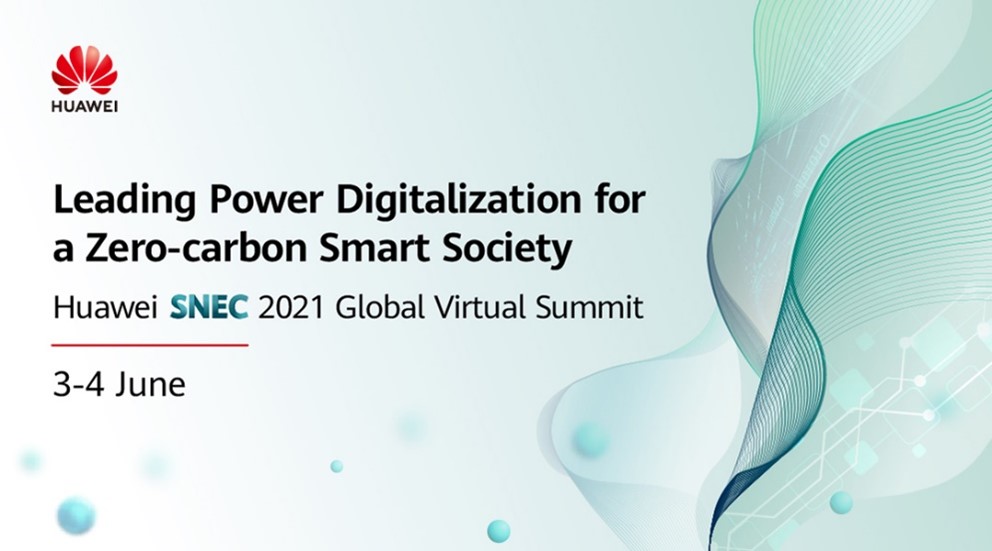
Image: Huawei.
1. FusionSolar 8.0: Create a Future-proof Smart PV Generator
Disrupting the traditional structure, Huawei launched the future-proof smart PV generator, called FusionSolar 8.0. It offers customers two benefits: First, the smart PV generator promises improved grid stability; second, the world’s first “Gemini” ±1500V design can help to support larger sub-arrays, higher voltages, thus could reduce LCOE by 7%.
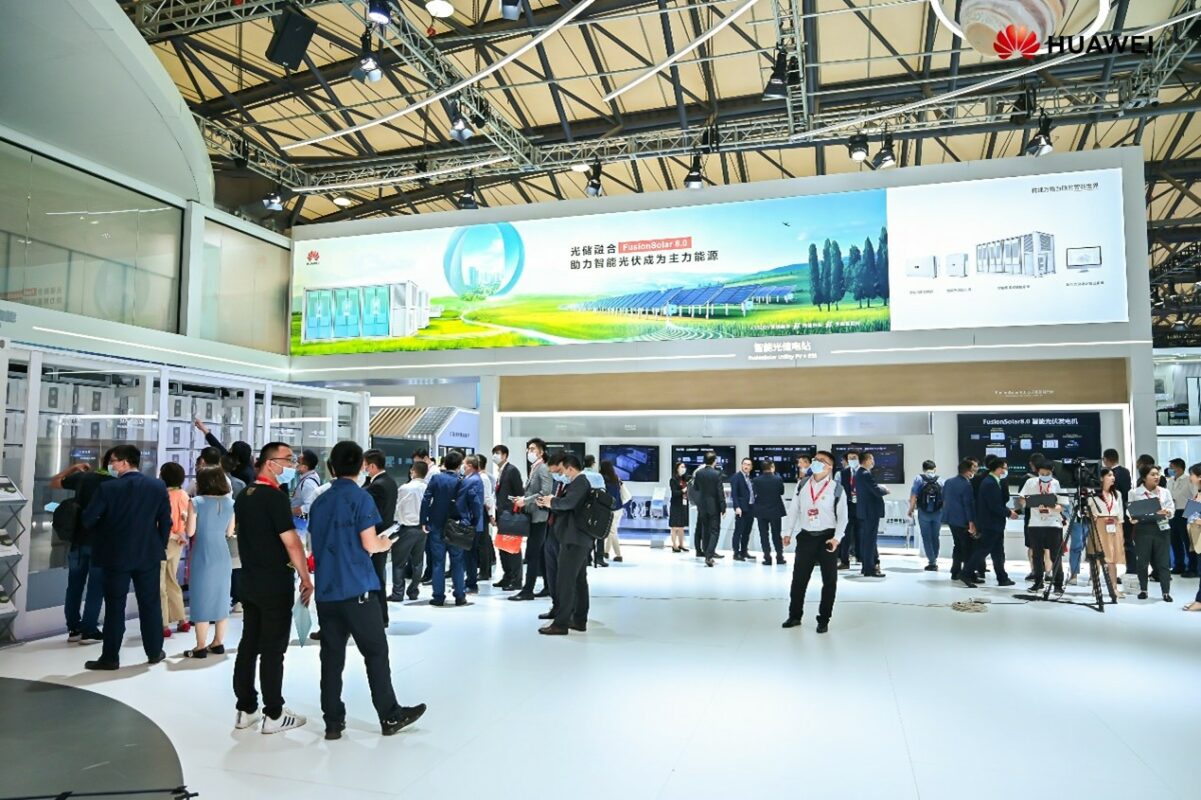
Image: Huawei.
Specifically, with the ±1500V bipolar string + smart string energy storage solution, the Smart PV Generator features the industry-leading DC-coupled architecture and adopts Grid Forming 1.0, an intelligent PV + storage collaborative control algorithm, to enable the PV power generation to be grid-connected synchronously and to allow solar power to be stored and controllable. It supports standalone PV systems and enhances power grids. Leveraging the convergence of energy and information flow, the efficient, intelligent and stable Smart PV generator will push PV to become the main energy source.
The world’s first 1500V “bipolar“ string pushes technology boundaries to double the system voltage. It supports larger sub-arrays and brings down cable losses, reducing LCOE by 7%.
In addition, Huawei showcases its all-scenario smart string energy storage solution. In traditional energy storage solutions, the difference in battery modules triggers mismatches, resulting in battery capacity degradation, a fast attenuation, difficult O&M, and high risks. With the deep integration of digital information technology, power electronics technology and energy storage technology, Huawei leverages the controllability of power electronics to solve the inconsistency of lithium batteries, bringing down LCOS by 20%.
2. Green Residential Power 2.0: Start new life in a zero-carbon Home
The upgraded Green Residential Power 2.0 solution highlights the innovative “1+3+X”structure. With the Smart Energy Controller at the core, it is equipped with three key components – the optimiser, the smart string ESS and the Green Power Cloud to build the intelligent power ecosystem. The Green Residential Power 2.0 solution, focusing on smart power generation, storage and smart power consumption with multiple active safety features, can lower your energy bill and allow you to start a new zero-carbon life.
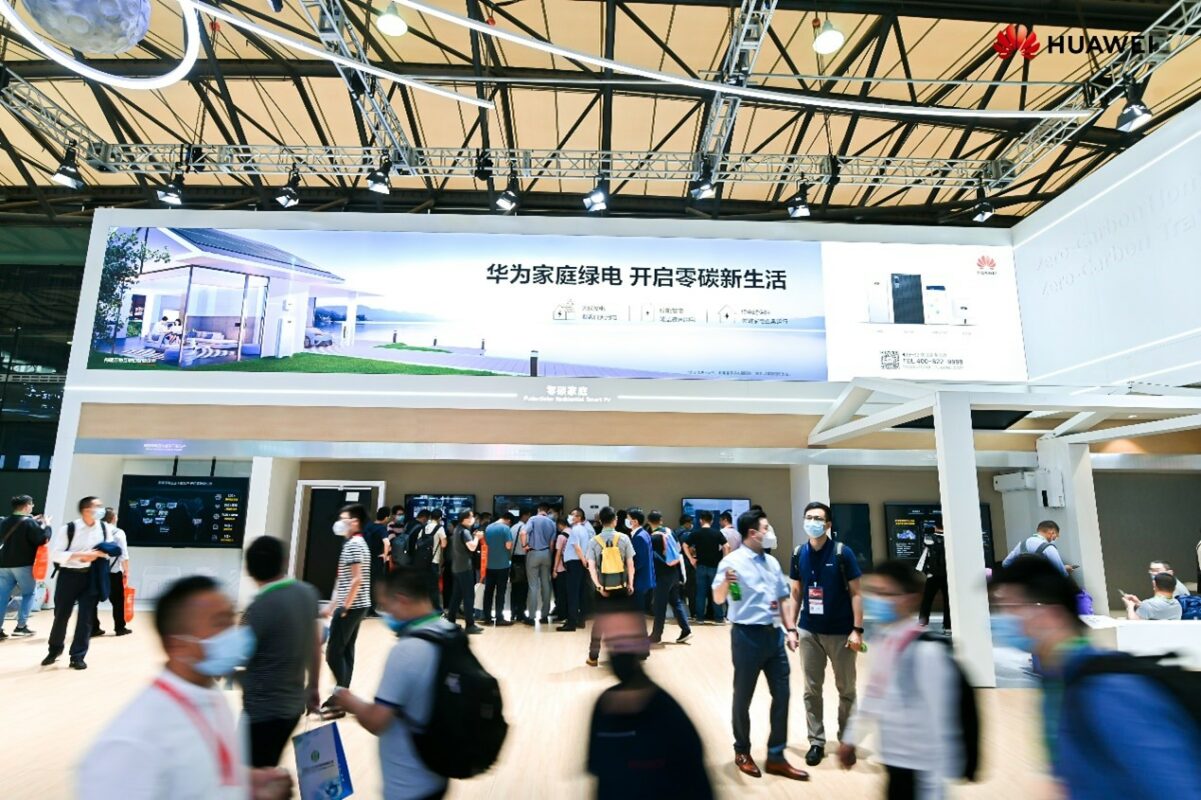
Image: Huawei.
When it comes to smart power consumption, Huawei has also released a brand new digital feature – PV, Storage & Consumption AI Synergy. Based on big data learning of weather and user electricity consumption habits, AI can accurately predict future PV power generation and household electricity consumption. Accordingly, it can optimally control the charging and discharging of energy storage under three different scenarios: sunny days, cloudy and rainy days, and finally smart homes mode. With such technology, it can help to maximise green electricity revenue in each scenario and effectively increase the ratio of self-consumed green electricity. Compared with the 60% of pure solar scenario, to 85% of PV with storage scenario, now the Green Residential Power 2.0 combined with the PV, Storage & Consumption AI Synergy function can further increase the self-consumption ratio of green power to more than 95%.
3. Green C&I Power 1.0: Let green power empower all industries
Huawei launched its new C&I solution this year, which fits different application scenarios including: solar only, storage only, solar + storage + charging and off-grid. With the application of optimisers and the smart string energy storage system, the solution can improve the energy yield by 30% and energy storage power by up to 15%. Huawei inverters support intelligent AFCI arc protection and automatically shut down within 0.5s, ensuring the active safety of systems.
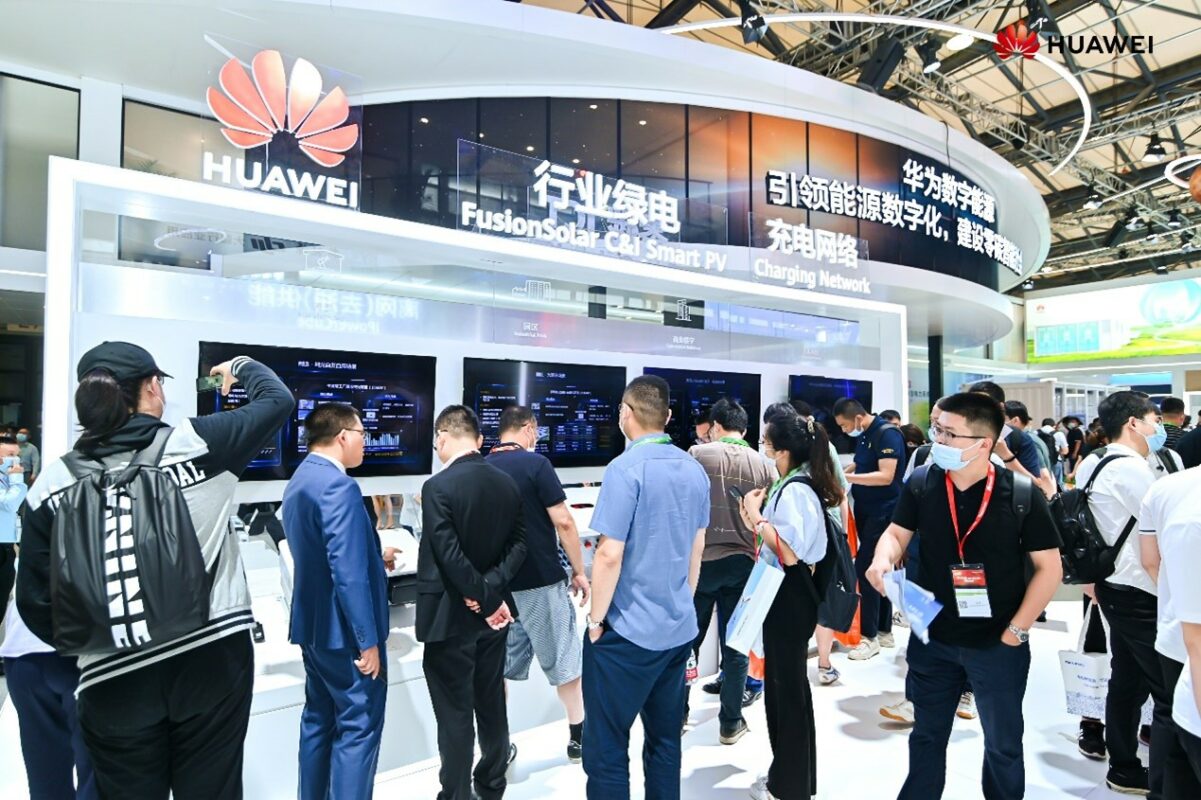
Image: Huawei.
4. Off-grid (fuel removal) comprehensive power supply solutions: Green and inclusive power supply to bridge the energy divide
Currently, nearly 900 million people across the globe have no access to grid power or live in areas with unstable power supply. Diesel generators (DGs) are highly polluting, costly, difficult to maintain and noisy, which seriously affects the normal life of residents and restricts the local economic development. Peng Jianhua, president of Huawei's Site Power Facility Domain, has released a full series of off-grid (fuel removal) comprehensive power supply solutions, called iPowerCube, which include a full series of MSP and can be applied to industrial production and livelihood scenarios. iPowerCube can reduce power generation costs by over 60% and help to promote green development, bridge the energy divide, and build a low-carbon society.
5. Energy Cloud: Set up an all-intelligent, secure, and open cloud platform to break new ground in the digital energy sector
From the Energy Cloud, customers will have access to all-scenario PV and storage power plants. Adhering to the concept of all-scenario refined management, Huawei enables module-level monitoring on the PV side while allowing the pack-level 3D visual management on the storage side. At the same time, the combination of big data analysis and AI intelligent applications (such as intelligent IV diagnosis, SDS intelligent DC power generation system and PV, Storage & Consumption AI Synergy) will allow PV and storage power plants to perform automatically.
Huawei is also committed to building a safe and credible digital platform to open data interfaces to a wide range of partners in an effort to break new ground in energy services and achieve win-win cooperation.
6. Huawei’s digital power zero-carbon all-scenario solution: Lead the power digitalisation for a zero-carbon and smart society
In addition to zero-carbon power generation, Huawei also displays the digital power zero-carbon all-scenario solution for the first time at SNEC. In the era of carbon neutrality, the Huawei Digital Power business unit gives full play to its strengths in digital technology and power electronics and integrates the watt, thermal, energy storage, cloud, and AI technology, to accelerate the digitisation of the energy industry and contribute to a zero-carbon smart society.
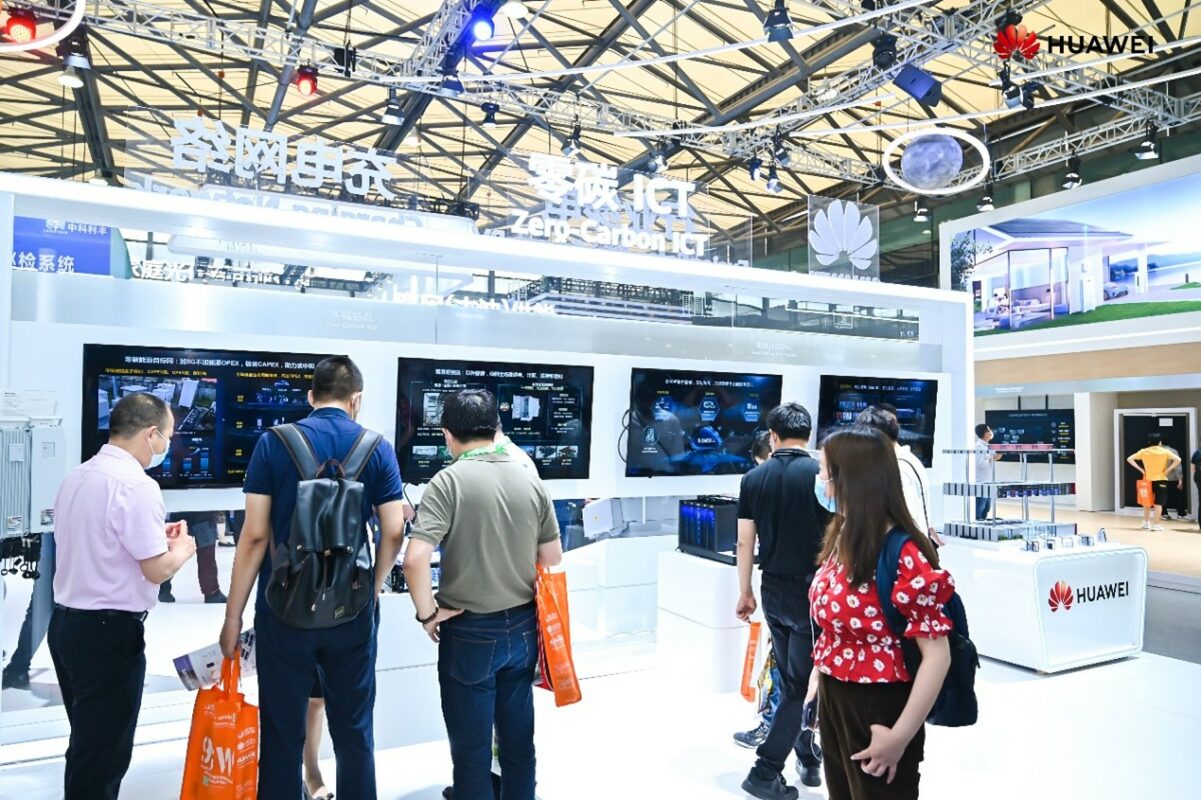
Image: Huawei.
- Zero-carbon Data Center: Simplified DC allows reshaping architecture through fully prefabricated and modular construction, shortening TTM from 20 months to 6 months.
- Zero-carbon Sites: Huawei provides simplified sites and server rooms, and uses all-scenario PV stacking to help 5G operators avoid the increased energy-related OPEX, resulting in zero-carbon sites.
- Zero-carbon Travel: Focusing on smart electric and smart charging networks, we consistently improve the driving and charging experience, solve safety problems, help EV manufacturers build great cars, and help charging station operators build high-quality charging networks to accelerate the electrification of the auto industry.
- Charging Networks: The intelligent charging network facilitates the charging of EVs by communicating information among humans, vehicles and charging stations.The HiCharger charging module helps charing facility operators improve the operation efficiency of the entire station, reduce the annual failure rate, improve charging efficiency, and save electricity costs.
- Modular Power: The integrated modular power supply fuels industrial upgrading and helps global partners achieve commercial success.
During the unfolding energy transition, renewables represented by solar PV will inevitably become the primary source of energy, and building a new power system with renewable energy as the main source is the key to achieve carbon neutrality. With profound expertise in the integration of digital technology and power electronics, Huawei works with customers and partners to promote the energy transition and build a zero-carbon and smart society.

